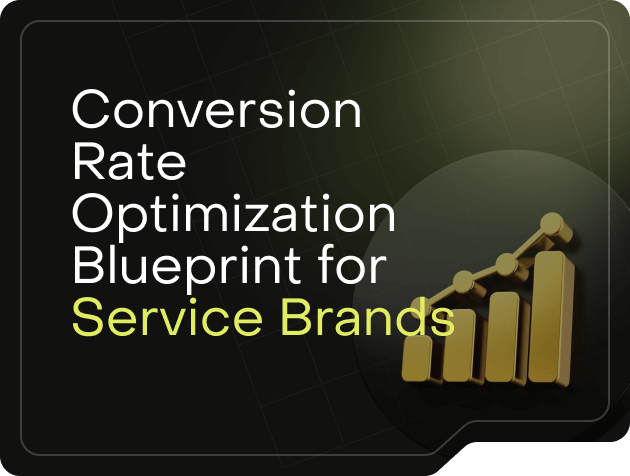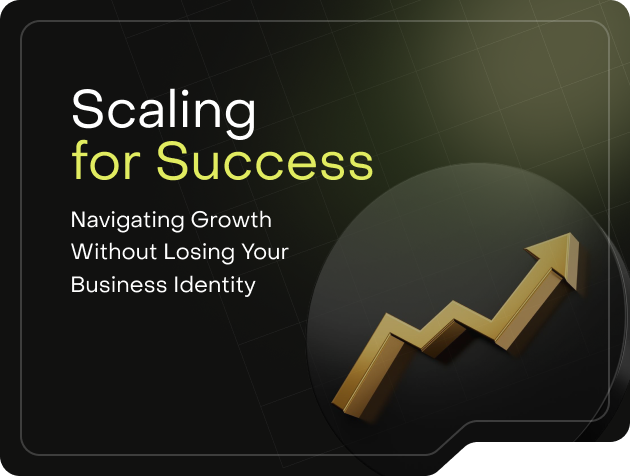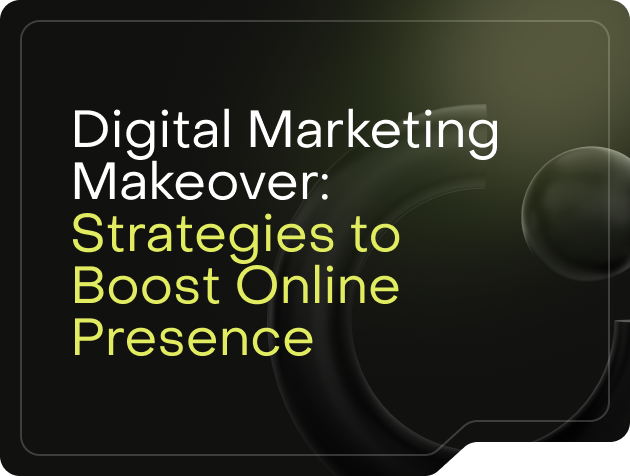Maintaining a strong brand is imperative for connecting with your audience and staying competitive. It includes more than just a logo or a tagline; it’s the narrative you weave and the emotional connection you cultivate with your customers.
But what happens when that connection disappears, or your brand’s message no longer resonates? That’s when you need to take action and realign your brand with your core values, mission, and audience needs.
Revitalizing your brand might seem overwhelming, but giving your business a fresh start is often necessary. Whether facing declining sales, outdated branding, or shifts in the market, a well-planned brand refresh can re-energize your brand’s presence and reconnect with your target audience.
It’s an opportunity to update your image, clarify your message, and position yourself for future growth. Let’s explore how to get your brand back on track for growth and renewed connection with your audience.
Signs Your Brand Needs a Makeover
Has your brand lost some of its luster? Perhaps your website traffic has dwindled compared to competitors, or your social media engagement leaves something to be desired. These could be signs that it’s time to consider a brand refresh. How can you be sure? Let’s explore the key indicators your brand might be due for an update.
Declining Brand Awareness
Think about pouring your heart and soul into building a fantastic product or service, only to find it gathering dust in the digital corner of obscurity. This low visibility is the unfortunate reality of declining brand awareness.
It can manifest in several ways, like a steady decline in website traffic, a drop in social media engagement, or even a struggle to be recognized by your target audience. These signs reveal the same truth: your brand isn’t effectively capturing market attention.
To determine if declining brand awareness is an issue, track your brand’s key performance indicators (KPIs), such as social media metrics, website analytics, and customer feedback. Tools like Google Analytics, social media insights dashboards, and customer satisfaction surveys are readily available to help you gather this data.
A Disconnect With Your Target Audience
If you’ve noticed a significant disconnect with your target audience, your brand needs a makeover. When customers no longer connect with your brand message, values, or offerings, loyalty and engagement can drop.
When your brand messaging or identity no longer resonates, it creates a communication gap. Jargon-filled marketing materials can confuse customers, while outdated visuals or an off-putting tone might miss the mark. Conducting market research or gathering customer feedback can help you understand their current needs and preferred communication styles.
Imagine conversing with your ideal customer. Would they understand your brand voice and find it engaging? If the answer is no, it’s time to reevaluate.
Outdated Branding
Trends move faster than ever these days. If your logo, color scheme, typography, and overall brand aesthetic feel old-fashioned or out of touch with current design trends, your branding is outdated.
Outdated branding, encompassing elements like a dated logo, a confusing website layout, or an uninspired color scheme, sends a clear message: “We’re out of touch.” It can be a significant deterrent, pushing customers towards competitors with a more modern and relevant presence.
Compare your brand with current industry standards and competitor branding. Pay attention to trends in design, technology, and consumer behavior. Recognizing these signs of an outdated brand is the first step towards revitalizing its appeal. A brand refresh can renew your company’s image, allowing you to connect with a broader audience and establish yourself as a leader in your industry.
Strategies for Rebranding Success
-
Setting Clear Goals
A brand refresh isn’t just about a new logo or a flashier website. It’s a strategic decision to achieve specific goals and propel your brand forward. Before diving headfirst into a rebranding project, it’s crucial to establish clear and measurable objectives.
These goals act as a roadmap, guiding your decisions and ensuring all efforts align with the desired outcome. Consider what you want to achieve, such as increasing brand awareness, reaching new customer segments, or revitalizing customer engagement. Ensure your goals are SMART: Specific, Measurable, Achievable, Relevant, and Time-bound.
Segment your goals into smaller, actionable steps to make the process more manageable and ensure measurable progress. This structured approach helps maintain focus and momentum throughout the rebranding process, ensuring that each aspect of the rebrand is executed efficiently.
As you gather data and feedback during the rebranding process, be prepared to refine your objectives to better align with your evolving business needs and market conditions.
-
Conducting Market Research
A successful rebranding hinges on a deep understanding of your target audience – their needs, preferences, and how they perceive your brand and competitors. Market research becomes your key to unlocking this treasure trove of information.
Finding Your Target Audience
Finding and understanding your target audience is crucial for a successful rebrand. Market research goes beyond demographics to paint a vivid picture of your ideal customer. It’s about understanding their inner world – their aspirations, goals, fears, challenges, and pain points.
Picture an interaction with someone who perfectly represents your target audience. Think about what this person is striving for, their obstacles, and what keeps them up at night. Prioritizing your target audience allows you to craft messaging and visuals to connect with them, fostering a more robust brand connection.
Consider age, gender, income, education, lifestyle, values, and buying habits. Use existing customer data, market research, and industry reports to build detailed customer personas representing your target audience segments. Incorporate these insights into your brand strategy to ensure your messaging, visual identity, and overall brand experience resonate with your target audience and meet their expectations.
Competitor Analysis
A successful rebrand aspires to do more than stand out; it aims to disrupt the market and establish a strong position. However, achieving this doesn’t happen in isolation. A thriving rebrand strategy is deeply rooted in the context of your competitive landscape.
Identify your direct competitors offering similar products or services and indirect competitors addressing the exact customer needs. Become a master of observation, analyzing their branding elements, marketing tactics, and customer engagement strategies to understand what they do well and where they fall short.
For each competitor, perform a SWOT analysis (Strengths, Weaknesses, Opportunities, Threats). This framework allows you to dissect their entire strategy and uncover gaps in the market that your rebrand can fill. Look for opportunities to capture a different audience segment their messaging might miss.
Market and Industry Trends
Today’s consumers are increasingly drawn to brands that align with their values. To truly get your brand back on track, understanding market and industry trends becomes a critical strategy for rebranding success. It’s the key to ensuring your brand refresh feels relevant, positions you for long-term success, and places you as an industry leader.
Consider this: market trends are your customer’s ever-changing needs and desires. Industry trends are the broader economic and technological forces shaping your field. By understanding both, you gain valuable insights to inform your rebrand.
Understanding current trends helps you anticipate changes in consumer behavior, identify new opportunities, and adapt your brand strategy accordingly. For instance, focusing on customer experience might lead you to develop interactive elements on your website or explore new social media platforms to engage your audience.
-
Crafting a Compelling Brand Story
Your brand story is the compelling narrative that infuses your identity with meaning and purpose. It’s the essence of who you are, what you stand for, and the impact you want to create. A compelling brand story goes beyond simply listing your products or services.
Purchases are often driven by emotional engagement. People connect with brands that share their values and aspirations. Your brand story is your opportunity to show your audience why they should care about your brand. It’s a chance to establish an emotional connection beyond the transactional.
This emotional connection is the key differentiator. In a crowded marketplace, it’s what makes your brand stand out. By understanding your audience’s struggles and offering a path forward, you become more than just a brand – the solution they’ve been searching for.
-
Developing a Cohesive Brand Identity
A brand identity is a cohesive blend of visual and verbal elements that collectively communicate who you are as a brand. These elements come together to create the experience customers have when they interact with your brand at every touchpoint, including your website, marketing materials, and even customer service interactions.
Envision a customer encountering your brand for the first time on social media. They see your logo and messaging and then visit your website, where they find the same colors, fonts, and overall tone. By presenting a unified brand experience across all touchpoints, you solidify your brand image and make it effortless for customers to identify you in the future.
To achieve this cohesion, develop a brand style guide. It outlines the specific details that make your brand unique, including logo usage guidelines, color palette breakdowns, approved typography options, and even your brand voice. Having a style guide ensures everyone involved, from designers to marketing teams, presents your brand consistently.
-
Launching Your Rebrand
Launching your rebrand is a critical phase where all your planning and hard work come to fruition. However, a well-defined launch plan is essential to maximize impact and ensure a smooth rollout. This plan is your comprehensive roadmap, outlining key milestones, timelines, and assigned responsibilities for every touchpoint.
Start by creating a detailed launch plan that includes timelines, key milestones, and responsibilities. This plan should outline every launch aspect, from revamping your website and social media profiles to informing your existing customers and stakeholders about the changes.
Clearly articulate the reasoning behind the rebrand and the tangible benefits it brings your audience. Utilize a multi-channel approach to spread the message, leveraging email marketing, social media posts, press releases, and engaging blog updates. Consistent messaging across all platforms reinforces your new brand identity and ensures your audience understands and embraces the changes.
-
Measuring Success
Assessing the results of your rebrand is critical for understanding its influence on your target audience and identifying areas for further refinement. Recall the strategic goals meticulously outlined during the planning phase. These goals become the foundation for measurement.
The key lies in defining key performance indicators (KPIs) that are aligned with your initial goals. These metrics encompass brand awareness, customer engagement, website traffic, sales figures, and customer satisfaction. Establishing these KPIs beforehand provides a baseline to compare against post-launch data, allowing you to measure the effectiveness of your efforts in achieving what you set out to do. Use Google Analytics, social media platform analytics, and customer feedback platforms to track your chosen KPIs over time.
Putting Your Brand Back on Track
While metrics offer valuable insights, a successful rebrand transcends mere numbers. It’s about creating lasting connections and driving growth. With over 12+ years of experience building and growing more than 400+ brands, we have the expertise to guide you through every step of your rebranding journey.
Whether you need help setting goals, conducting market research, or crafting a compelling brand story, our team at AVINTIV is here to ensure your rebrand achieves the success you envision. Reach out to us today to start transforming your brand!









